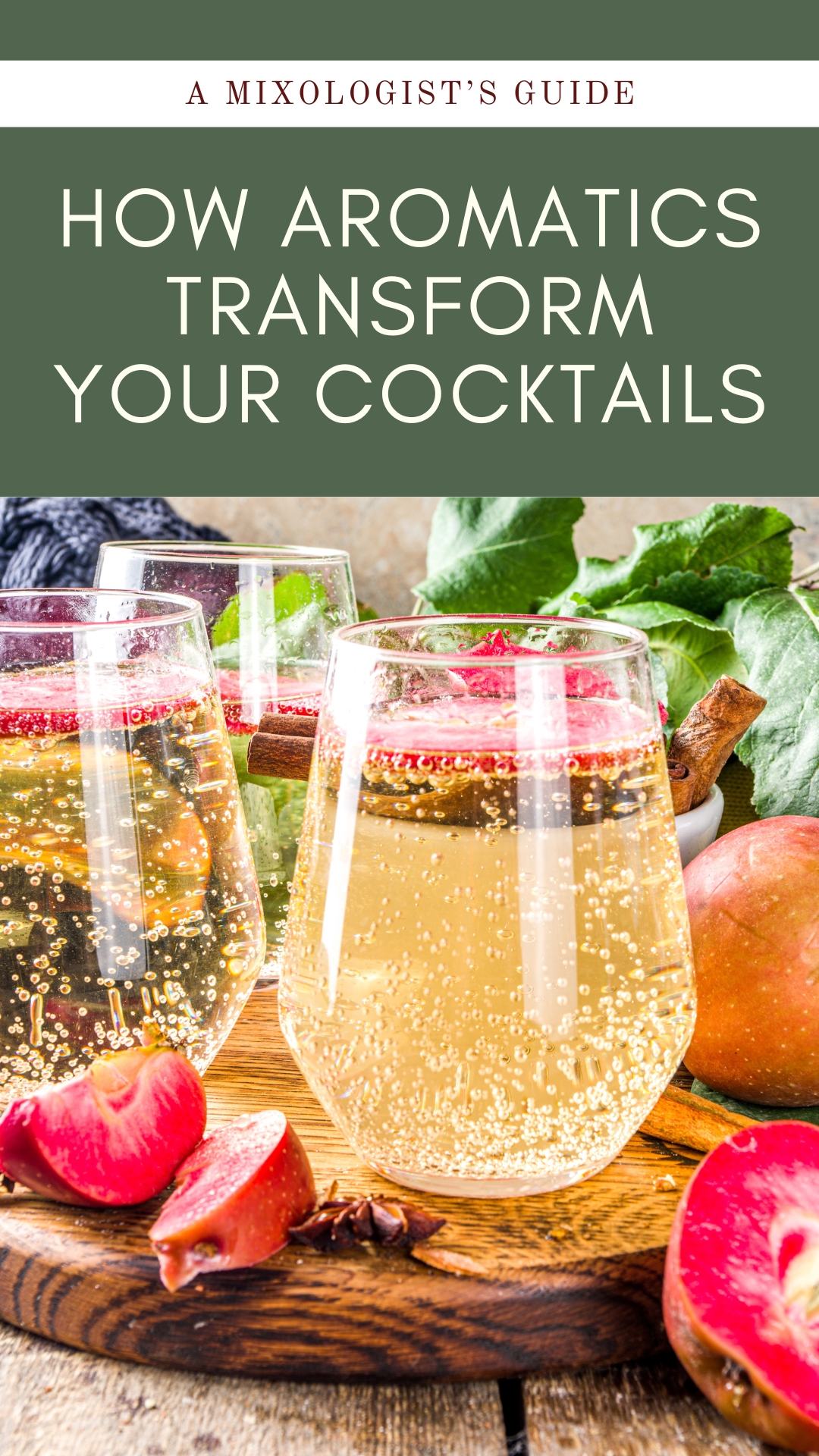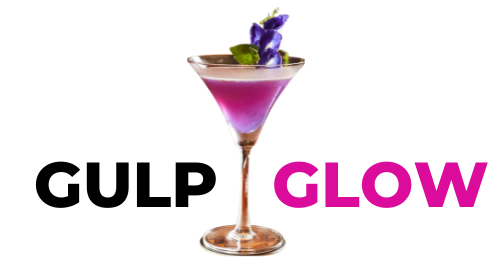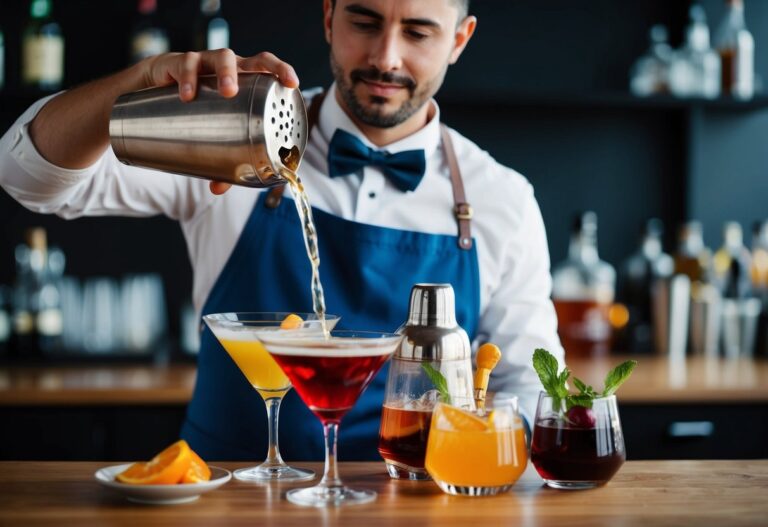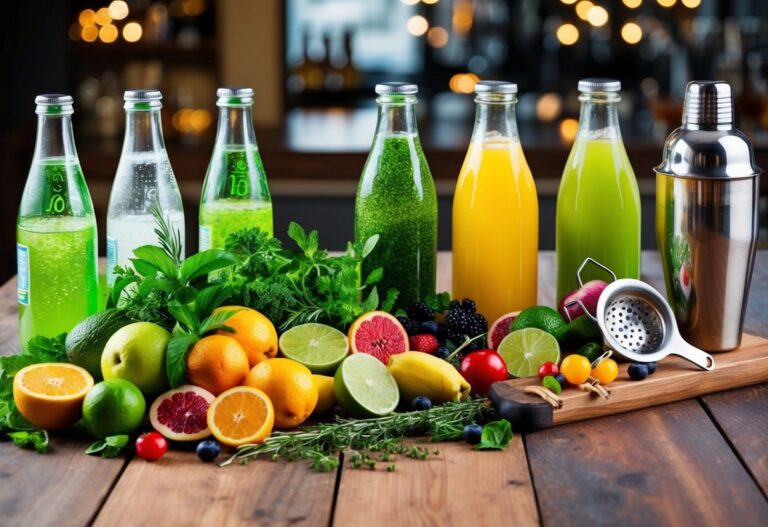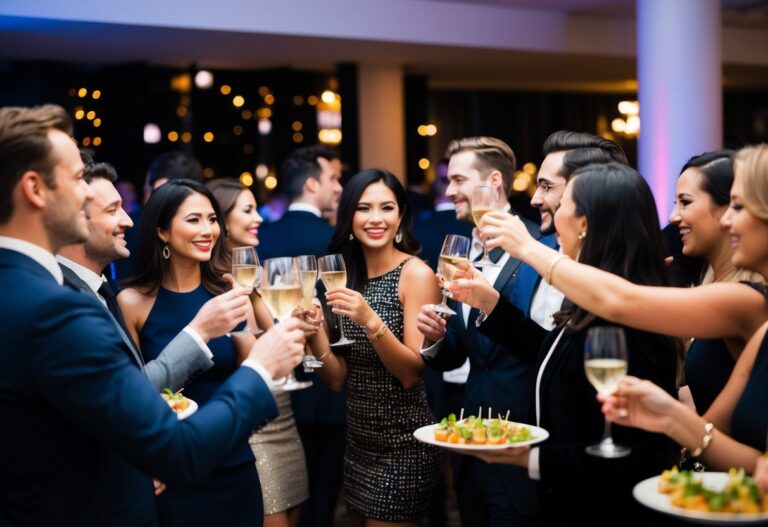The Role of Aromatics in Cocktails: Enhancing Your Senses
Ever wondered why some cocktails are so memorable? The secret might be right under your nose. It’s not just about taste; the aroma of a cocktail plays a huge role in the drinking experience. Imagine sipping on a drink and getting a whiff of rosemary or grapefruit. Instantly, it feels more special.
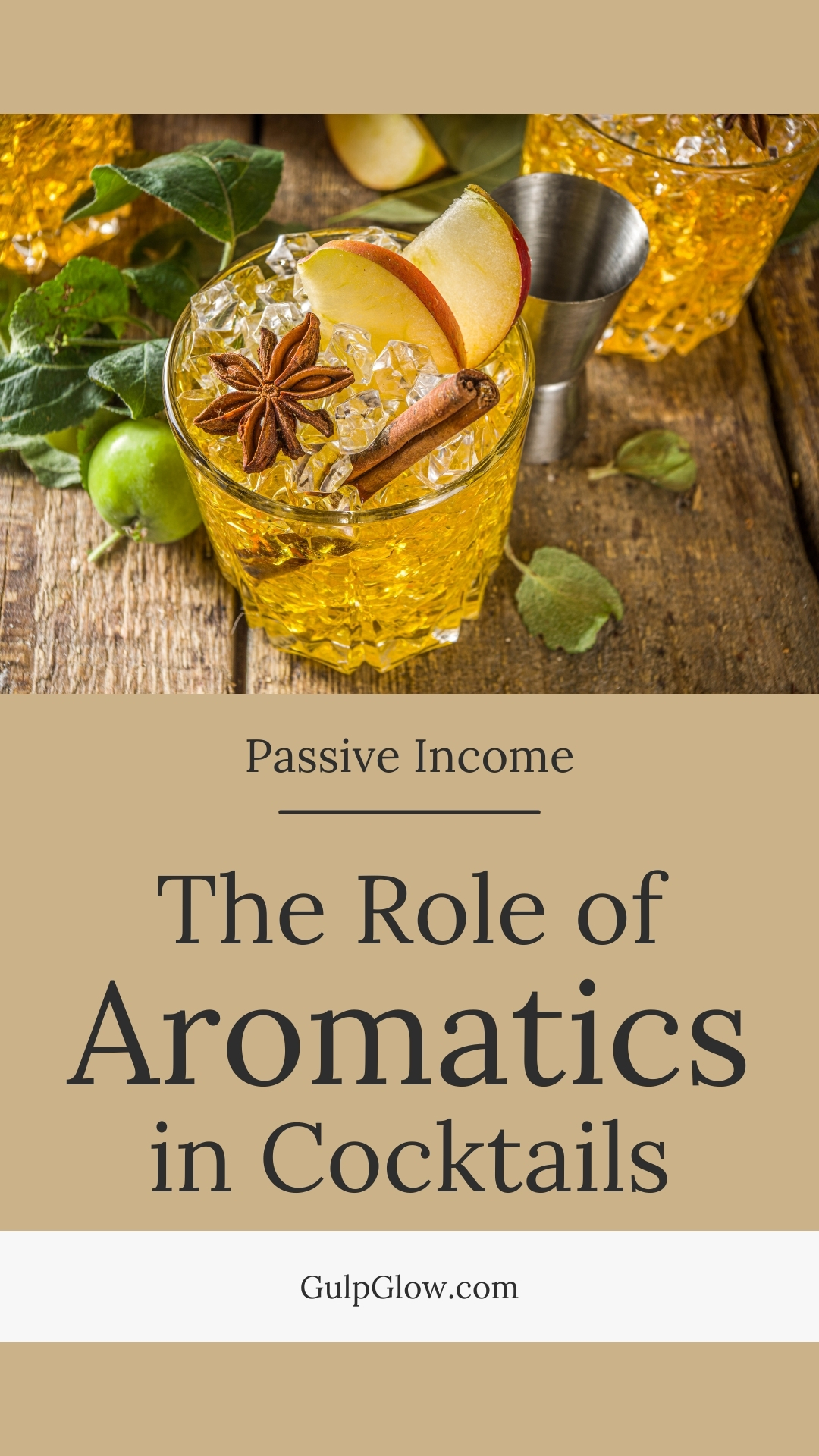
In the world of cocktail culture, mixologists use aromatics to elevate their creations. Your sense of smell is powerful; it actively shapes how you perceive flavor. When you take a sip, the scent complements and enhances what your taste buds detect, creating a more complex and enjoyable experience. This is why many modern cocktails include garnishes like herbs or spices, targeting your senses beyond just taste.
Think about the last time you had a cocktail with an aromatic garnish. Did the fresh mint or fragrant citrus peel make it more delicious? Aromatics are not just a fancy touch; they are essential. The scents activate olfactory receptors, blending with the cocktail’s flavors to deliver a richer, fuller profile. By understanding the role of smell, you can appreciate why some drinks stand out more than others.
Scent and Sensibility: The Science of Aromatics in Cocktails
Understanding how our sense of smell influences the tasting experience can truly elevate your cocktail game. By exploring the connection between aromas and taste buds and delving into the chemistry behind these scents, you’ll gain a deeper appreciation for the art of mixology.
Aromas and Taste Buds: How They Work Together
Your sense of smell plays a huge role in how you experience flavors. When you taste a cocktail, your taste buds recognize basic tastes like sweet, sour, bitter, salty, and umami. But it’s the aroma that fills in the complex details.
Think about biting into a slice of lemon. Your taste buds pick up the sourness, but it’s the citrusy smell that makes it a full experience. The same goes for cocktails. Scents like rosemary, lavender, or a twist of citrus can transform a simple drink into something special.
Ever noticed how you can’t taste much when you have a cold? That’s because your sense of smell and taste are tightly linked. Aroma molecules travel to sensory receptors in your nose, which sends signals to your brain about flavor. Use this to your advantage when designing cocktails!
The Chemistry Behind Cocktail Aromas
The magic of cocktail aromas starts with chemistry. Each ingredient in your drink has volatile compounds that evaporate and become aroma molecules. When you shake or stir a cocktail, these molecules are released into the air.
For instance, citrus peels have essential oils that release when muddled or twisted, adding a fresh scent that can dominate the flavor profile. Herbs like mint or basil contain aromatic compounds that rise from your glass, creating an enticing effect.
Bitters also play a role. They are packed with concentrated aromatic compounds that can dramatically change the smell and taste of a drink. By adding just a few drops, you can introduce complex layers of aroma that enhance the drinking experience.
Essential Ingredients: Building Blocks of Cocktail Aromatics
When crafting aromatic cocktails, ingredients like bitters, botanicals, citrus, and herbs play a significant role. These elements not only add flavor but also enhance the overall drinking experience through their aromas. Let’s break down the key components.

The Role of Bitters and Botanicals
Bitters are like the secret weapon in many cocktails. They add complexity and depth. Made from herbs, roots, and spices, bitters can turn a simple drink into something extraordinary.
For example, Angostura bitters, made with gentian root, cinnamon, and cloves, offer a spicy aroma. Different botanicals bring unique scents and flavors. Think of chamomile or lavender adding a floral note. These elements work together to create a balanced and aromatic cocktail.
Citrus and Herbs: Freshness in Every Sip
Citrus fruits like lemons, limes, and oranges are essential in cocktails for their bright and zesty aromas. The zest or peel of these fruits releases oils that add a fresh, fragrant quality.
Herbs, on the other hand, provide earthy and sometimes sweet notes. Mint, basil, and rosemary are popular choices. Imagine a Mojito without the invigorating scent of mint—it just wouldn’t be the same. Herbs and citrus bring a refreshing balance to cocktails, making each sip more enjoyable.
Sweet, Sour, Salty, Bitter, Umami: Balancing Flavors
Achieving balance in a cocktail involves a mix of sweet, sour, salty, bitter, and umami flavors. Sweetness often comes from syrups or liqueurs, while sourness is commonly added through citrus juice.
A pinch of salt can enhance flavors like in a Margarita. Bitterness from bitters or some botanicals adds another layer. Umami, a savory taste, can come from ingredients like tomato juice in a Bloody Mary. Balancing these elements ensures an aromatic and flavorful cocktail that pleases every palate.
Techniques and Tools for Enhancing Aromatics

Enhancing aromatics in cocktails relies on a mix of tools and techniques. These methods bring out the best in your drink’s flavors, making each sip a sensory delight.
Shaking, Stirring, and Dilution: The Dynamics of Mixing
Shaking and stirring are not just about mixing ingredients, but also about controlling temperature and dilution. Shaking a cocktail rapidly chills it and creates small ice shards, adding texture. Use a sturdy cocktail shaker for this.
Stirring, on the other hand, is gentler, maintaining the integrity of delicate spirits while chilling and diluting the mix slightly. A long-handled bar spoon is essential for this task. Precise dilution affects aromatics, balancing flavors and aromas perfectly.
Garnishes and Glassware: The Final Touch
Garnishes and glassware are the visual and aromatic finish to your cocktail. Fresh citrus peels, herbs, and aromatic bitters not only add a pop of color but also release essential oils that enhance the drink’s smell. Try rubbing a lemon peel around the rim of the glass to release its oils.
Glassware also matters. Use a rocks glass for a robust drink, or a martini glass for something more refined. The shape of the glass can funnel aromas directly to your nose, enriching the experience.
Advanced Techniques: Smoking and Infusion
Smoking and infusion add advanced layers of aroma and flavor. Use a handheld smoker to introduce a smoky aroma. Place the drink under a glass dome and fill it with smoke for a dramatic effect.
Infusing spirits with ingredients like vanilla beans, herbs, or spices can create unique aromatic profiles. Seal the ingredients with your chosen spirit in an airtight container and let them sit for several days. This method requires patience but rewards you with deeply infused flavors.
The Bartender’s Art: Creativity in Cocktail Creation

Bartenders balance creativity and skill to craft memorable drinks. They experiment with modern techniques and celebrate classic cocktails by offering exciting new flavor combinations.
Experimentation and Innovation in Modern Mixology
Mixologists love to experiment. They see the bar as their canvas and each drink as an art piece. Using fresh ingredients like herbs, fruits, and spices creates unique flavors.
Today’s bartenders also explore molecular gastronomy. Ingredients transform in unexpected ways, delivering both surprise and delight.
Smoked cocktails are a hit. They add layers of aroma and taste, making your drink experience unforgettable. Liquid nitrogen, spherification, and infusions are also now part of the bartender’s toolkit.
Bartenders constantly push boundaries. They blend different spirits, mixers, and garnishes. This creativity leads to innovative drinks that engage your senses fully.
Classic Cocktails and New Flavor Combinations
Classic cocktails are timeless. The Old Fashioned, Martini, and Margarita stand strong. But bartenders love to put a twist on these classics.
Imagine a spicy Margarita with chili-infused tequila. Or an Old Fashioned with coffee bitters. These additions take familiar drinks to a new level.
Seasonal ingredients also inspire new creations. Fresh peaches in summer or cranberries in winter can make your cocktail experience special.
Bartenders must balance flavors carefully. Too much of one ingredient can overpower others. Perfecting this balance turns a good cocktail into a great one.
Experiencing Aromatics: From First Sniff to Last Sip
Smell plays a crucial role in how we experience cocktails. From the first sniff, aromatics enhance the perception of flavor and create a rich sensory journey. Let’s explore the role of aroma in drinking and how it shapes your enjoyment and memories of cocktails.
The Role of Aroma in the Drinking Experience
When you first bring a cocktail to your nose, your smell receptors get to work. These receptors are located in your olfactory epithelium, which sends signals to your brain about the aromas you’re detecting.
Imagine taking a sip of a cocktail that smells of citrus and spices. Before the liquid even touches your tongue, you’re already starting to perceive the flavor. This is because about 90% of your flavor experience is linked to your sense of smell. This means that what you smell directly impacts how you taste the drink.
Mixologists use this to their advantage by adding aromatic elements like herbs, spices, and oils to their cocktails. These ingredients don’t just add flavor but also create complex aroma profiles that enhance the overall sensory experience.
The Impact of Aromatics on Cocktail Enjoyment and Memory
Aromas have the power to evoke memories and emotions, making your cocktail experience more memorable. When you smell something familiar, like fresh mint or lavender, it can transport you to a different time and place.
For example, a cocktail with a hint of vanilla might remind you of baking cookies at home. This emotional connection can make the drink more enjoyable. Studies have shown that scent has a strong link to memory, which explains why certain smells can be so impactful.
Moreover, the right aromatic combination can elevate an ordinary cocktail into an extraordinary one. By carefully choosing ingredients that complement each other, bartenders can create unique experiences that linger long after the last sip.
Trends and Innovations in Cocktail Aromatics

Cocktail aromatics add another dimension to your drinking experience by engaging your sense of smell. From molecular mixology techniques to the influences of social media, aromatic trends in cocktails continue to evolve.
Molecular Mixology: Pushing the Boundaries of Flavor
Molecular mixology uses scientific techniques to create innovative cocktails. Techniques like spherification and foaming allow you to experience new textures and flavors. Imagine sipping a cocktail with a foaming top that releases fragrant aromas of rosemary, or biting into a spherified bead filled with grapefruit juice and aromatic botanicals.
These methods not only enhance the flavor but also introduce visual elements that make your cocktail photos Instagram-worthy. This approach to mixology is more than a fad; it’s a revolution in how flavors and aromas interact.
The Influence of Social Media on Aromatic Trends
Social media platforms like TikTok have brought rapid changes to cocktail trends. When you see a beautifully garnished, aromatic cocktail on your feed, it’s hard not to get inspired. TikTok videos showcasing cocktails with dramatic flavors and scents often go viral, setting new standards.
Bartenders increasingly rely on social media for both inspiration and promotion. Hashtags like #AromaticCocktail and #MolecularMixology help spread these trends faster than ever before. Your favorite bar might be inspired by the same videos you watch, integrating those aromatic innovations into their menu.
The Evolution of Aromatic Cocktails Through History
Aromatic cocktails aren’t a new concept; their history is rich and layered. Early bartenders used herbs and spices to create balanced drinks. Over time, the methods have evolved, bringing more sophisticated flavor compounds into the mix.
For instance, in the 19th century, bartenders began using bitters—concentrated infusions of botanicals, herbs, and fruits. This formed the foundation for today’s complex, aromatic cocktails. By looking at history, you’ll see that today’s innovations stand on the shoulders of past generations, continually pushing the boundaries of what an aromatic cocktail can be.
Frequently Asked Questions

Aromatics in cocktails play a crucial role in enhancing the drinking experience. Here, we dive into how scent influences flavor, the importance of garnishes, and innovative techniques in mixology.
How does the scent of a cocktail influence its overall flavor profile?
The scent of a cocktail greatly influences its flavor. Your nose can detect numerous aromatic compounds, impacting what you taste. Since smell and taste are closely connected, a drink’s aroma can make it more enjoyable and complex.
Can you explain how the use of garnishes affects the aroma and experience of a cocktail?
Garnishes like a sprig of rosemary or a lemon twist add not just visual appeal but also release essential oils that enhance the drink’s aroma. This sensory boost makes the drinking experience richer and more enjoyable.
What’s the best way to incorporate aromatic elements in cocktail crafting?
To incorporate aromatics, muddle herbs, use flavored syrups, or add aromatic bitters. Shaking ingredients like fresh mint or zesting citrus over the glass before serving can also introduce delightful scents that elevate the cocktail’s taste.
How do different types of glassware impact the aromatic characteristics of a cocktail?
Different glass shapes can direct the aroma to your nose. For instance, a coupe glass allows more surface area for the aroma to escape, while a narrow wine glass keeps the scent concentrated, enhancing your sensory experience.
Could you tell me how olfactory perception plays a role in cocktail enjoyment?
Olfactory perception is vital in cocktail enjoyment. Your sense of smell works with your taste buds to detect flavors. This combined sensory input makes drinks not just taste better but also feel more immersive and memorable.
What innovative techniques are bartenders using to enhance the aroma of their cocktails?
Bartenders are now using techniques like smoke infusions, aromatic mists, and flavored foams. These methods provide intense aromatic experiences. Some bars even use perfume pipettes to add a fragrant touch to their cocktails, making each sip unique.
